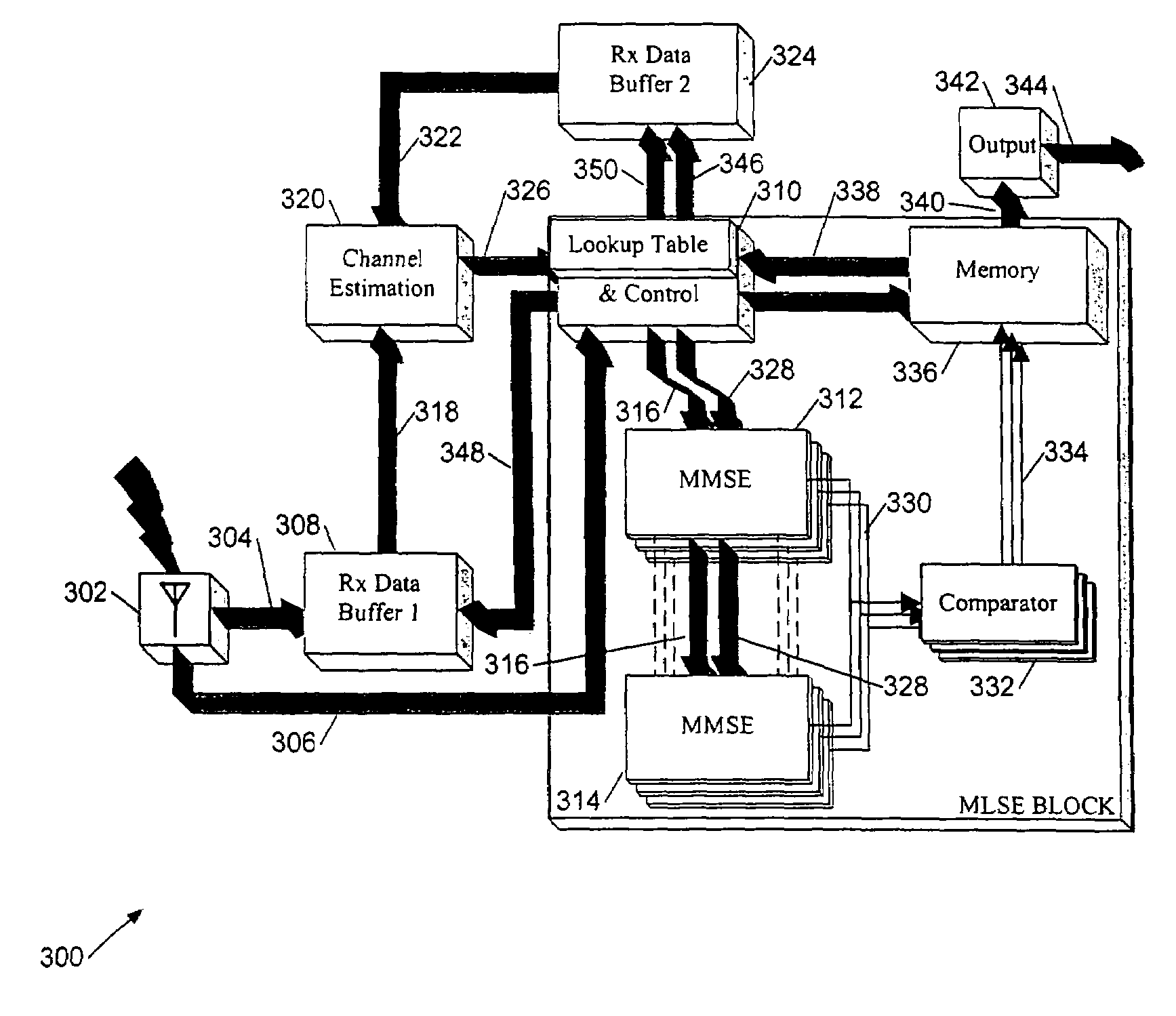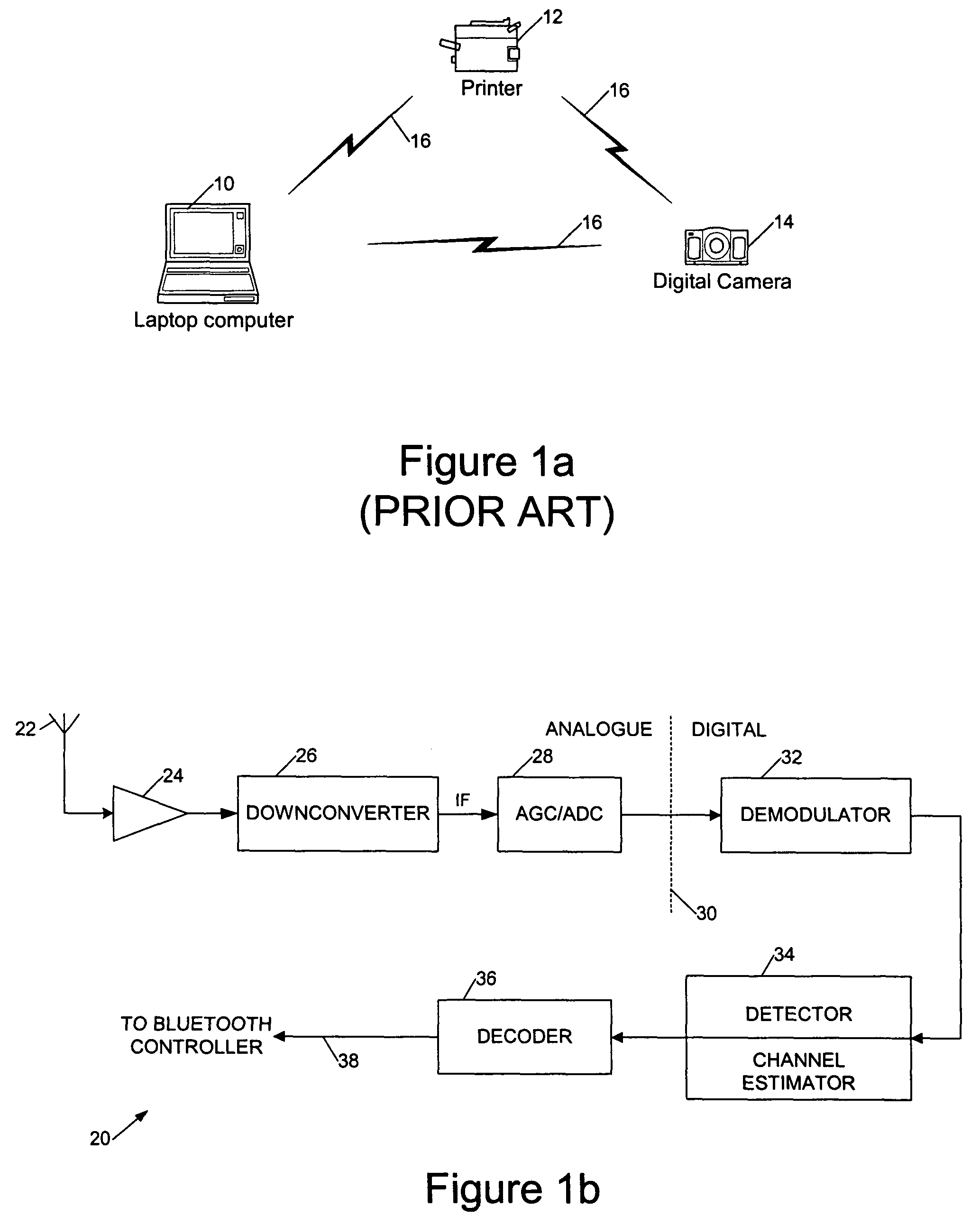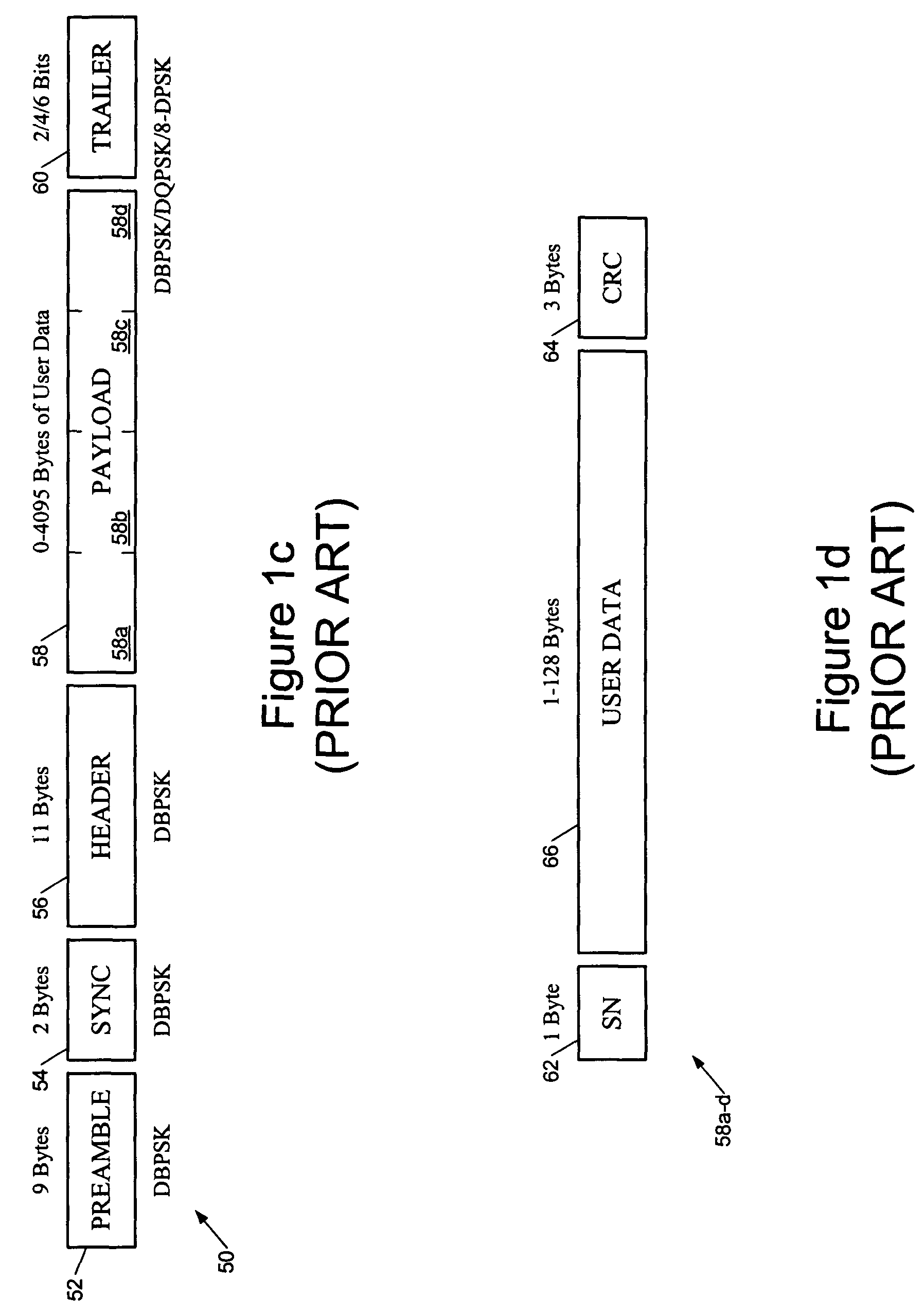Equaliser apparatus and methods
a technology of equaliser and equalizer, applied in the field of equaliser in digital communications system, can solve the problems of wasting transmission bandwidth, long training sequence, relative complexity of implementation, etc., and achieves the effect of facilitating the comparison of received signals, and reducing the number of computations
- Summary
- Abstract
- Description
- Claims
- Application Information
AI Technical Summary
Benefits of technology
Problems solved by technology
Method used
Image
Examples
Embodiment Construction
[0037]For convenience embodiments of the invention will be described with reference to High Rate Bluetooth but applications of the invention are not limited to this system.
[0038]FIG. 1a shows the Bluetooth concept in which a computer 10, printer 12, and camera 14 are all in communication with one another by means of bi-directional Bluetooth radio links 16. Bluetooth can also be used for wireless connections to high speed voice / data access points.
[0039]FIG. 1b shows an outline block diagram of Bluetooth receiver 20. The Bluetooth receiver 20 is typically part of a Bluetooth transceiver and a transmitter and transmit / receive switch (not shown in FIG. 1b) are generally also coupled to antenna 22 to allow both transmission and reception of data. The receiver comprises an antenna 22 coupled to a pre-amplifier 24 and a downconverter 26 providing an IF (Intermediate Frequency) or alternatively baseband output to an AGC (Automatic Gain Control) and analogue-to-digital conversion (ADC) block...
PUM
 Login to View More
Login to View More Abstract
Description
Claims
Application Information
 Login to View More
Login to View More - R&D
- Intellectual Property
- Life Sciences
- Materials
- Tech Scout
- Unparalleled Data Quality
- Higher Quality Content
- 60% Fewer Hallucinations
Browse by: Latest US Patents, China's latest patents, Technical Efficacy Thesaurus, Application Domain, Technology Topic, Popular Technical Reports.
© 2025 PatSnap. All rights reserved.Legal|Privacy policy|Modern Slavery Act Transparency Statement|Sitemap|About US| Contact US: help@patsnap.com



